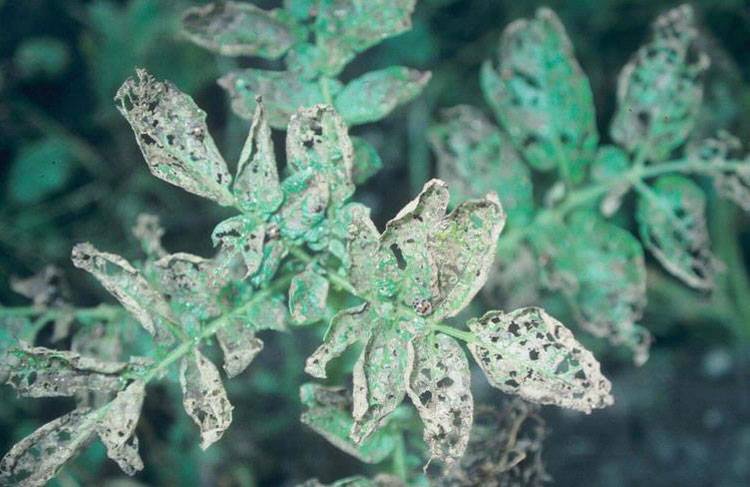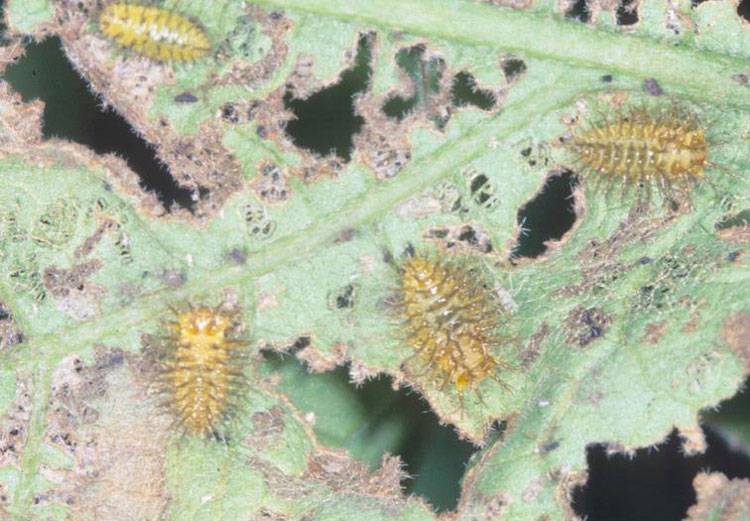Brinjal
Spotted Beetle

Spotted Beetle
Henosepilachna vigintioctopunctata

Spotted Beetle
Henosepilachna vigintioctopunctata

Spotted Beetle
Henosepilachna vigintioctopunctata
Hadda Beetle (Henosepilachna vigintioctopunctata): A Major Pest in Cucurbit Crops
Introduction: The Hadda beetle, scientifically known as Henosepilachna vigintioctopunctata (Fabricius), is a polyphagous pest affecting various economically important agricultural crops in India. It is particularly notorious for damaging cucurbit crops, especially bitter gourd (Momordica charantia). Effective management requires understanding its life cycle and behavior.
Life Cycle:
-
The Hadda beetle undergoes holometabolous development with four stages: egg, larva, pupa, and adult.
-
Egg period: 2-4 days; laid in batches (200-370 eggs) over 6-7 batches per female.
-
Larval period: 10-35 days; larvae are pale yellow with dark-tipped spines.
-
Pupal period: 5-6 days; forms on leaves.
-
Adult period: 20-50 days; males survive 23 days, females 30 days on average.
-
Entire life cycle completes in 20-26 days (average 22.5 days), depending on temperature (optimal 28-30°C) and host plant.
Identification:
-
Adults: Oval, dull orange with 28 black spots and short hairs.
-
Size: Approximately 7 mm long.
-
Eggs: Yellow, oval, laid on the underside of leaves.
-
Larvae: Pale yellow with dark-tipped spines.
Host Plants and Damage:
-
Host Plants: Solanaceous crops such as potatoes, tomatoes, eggplant, and weeds like black nightshade.
-
Damage: Both larvae and adults scrape chlorophyll, causing skeletonization and drying of leaves, leading to defoliation and yield loss.
Control Measures:
-
Cultural Practices: Crop rotation, sanitation, and removal of infested plants.
-
Biological Control: Utilize natural predators and parasites.
-
Chemical Control: Use of insecticides when infestation crosses the economic threshold level.
Conclusion: Integrated pest management, incorporating cultural, biological, and chemical methods, is crucial for effectively managing the Hadda beetle and minimizing crop losses.
